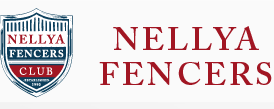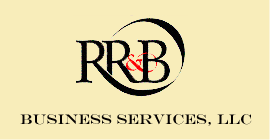EMPLOYEE BENEFITS & RETIREMENT
Today's Solutions for Tomorrow's Risk Management Challenges
Strategic Risk Advisors approaches challenges with a completely open mind "thinking outside the box" instead of using the common solutions. We strive to provide high-quality solutions to increase your efficiency and productivity.
Employee Benefits & Retirement
Employee Benefits and Retirement Plans are a key component of the recruiting, and retention of key team members. However, benefits cannot be evaluated in isolation as they should be considered part of a total compensation program. As has been reported in the press, medical care costs continue to escalate faster than the overall cost of living, in spite of government mandated programs such as the Affordable Care Act.
But you don’t want it to put your company at risk today or in the future. So you need to plan smart and avoid any long-term obligation that is not manageable and look at your benefits costs as a controllable expense. We can help you make smart decisions in these areas:
Plan Evaluation
The first step in evaluating your Benefits Plan is to understand company goals, directions, and philosophies regarding its employees. Then, the current Plans need to be evaluated in order to determine whether they promote these same company objectives. Some of the metrics to be considered include the benefits structure, number and type of Plan options offered, the geographic distribution of employees, employee/company cost sharing, historic claims experience, and funding techniques.
Plan Design and Marketing
In designing a Benefits Plan, first one must consider the findings of the Plan evaluation in conjunction with the company objectives. Based on these findings, a Benefits broker is then engaged to secure competitive proposals. While it is true that there are a limited number of insurance companies currently providing medical care insurance, cost control options are available including negotiating prescription drug pricing (the fastest growing component in health care) as well as reinsurance/stop loss coverage. Additionally, a vibrant competitive market continues to exist for non-medical insurance benefits such as life, disability income, dental, and vision benefits.
Evaluation of Funding Options
A number of funding options are available for companies to consider. The most common is fully insured (fixed price) whereby the insurance company charges a fixed monthly premium and pays claims according to the insurance contract. However, other options are also available including self-insurance/funding whereby the employer hires an insurance company or administrator to provide a care network and process claims. Using a self-funding approach can utilize different structures from taking all of the risks for claims to various risk sharing scenarios. Strategic Risk Advisors is able to assist your organization to understand and evaluate what approach is most appropriate for your unique situation.
Claim Management/Wellness Initiatives
Simply providing medical insurance is no longer an effective approach to managing health care costs within your program. Utilization Management, chronic disease management, and wellness initiatives have become necessary components of a successful and effective medical care plan.
Employee Communications/Surveys
A company can have the most comprehensive employee benefits program, however, if it is not well communicated, you are not getting the full value of your investment. Some of the types of communication tools our clients have implemented include open enrollment meetings both in-person as well as utilizing remote communications, routine email or home email mail campaigns, intranets, and employee surveys.
Retirement Plans
In years past, it was reasonable to rely on one's employer's pension plan combined with Social Security for retirement planning. A key component to most employee benefits programs today is the availability of Retirement planning. While we saw defined benefit pension plans in the past, the most common retirement plan structure today is a 401K plan. In fact, these plans are often a critical consideration in the recruiting and retention of key employees. In structuring a 401K Plan, many considerations and options are available that require careful planning, administration, and management. Additionally, as the fiduciary obligations employers must comply with continue to become more stringent, it is critical that your retirement plan has appropriate oversight and management.
Regulatory Compliance
Congress has continued to increase the regulatory compliance burdens for both medical and retirement plans. The Affordable Care Act not only implemented coverage mandates on individuals, but it also established additional requirements for employers including minimum acceptable coverage standards, maximum deductibles, and even how much employees can be asked to contribute to the cost of coverage. Fully insured medical plans often have State-specific coverage mandates. While Self-Funded plans may escape certain State mandates and taxes, compliance with ERISA and ACA is still required. Additionally, 401K plans may be designed to comply with Safe Harbor rules or may be subject to a complex set of testing to assure that the Plan is not discriminatory, top-heavy, or inappropriately funded.
PEO/ASO Evaluation
In addition to the traditional employment structure, some companies may benefit from the utilization of a Professional Employer Organization. With a PEO, your employees become “co-employees" of both your company and the PEO. This structure allows the PEO to not only provide Human Resources services, but they will often make available a complete suite of employment-related services including development of employee policies, medical and other insurance benefits, retirement plans, payroll services including tax reporting, Worker's Compensation insurance, and administration of all of these programs. This can sometimes be a cost-effective approach through the economy of a large number of participants in the benefits plans as well as obtaining the HR expertise many smaller employers are not able to effectively staff internally. Often insurance brokers do not promote the PEO option as it reduces the commission income payable for the placement of the various insurance policies. Since we are not commission-based, our independence allows Strategic Risk Advisors to assist in evaluating this alternative objectively.
CONTACT INFO
Strategic Risk Advisors
100 Inland Drive
Sandy Springs, GA 30342
P. 404.276.7475
F. 404.478.6864
E. dadler@strategicrisk.net
SERVICES
Insurance Management
Cyber Risk
Claims Management
Employee Benefits & Retirement
Workers Compensation
Special Projects
Is your company at risk? Get a free consultation to find out.
Contact us today for a free initial consultation to talk about your risk management programs and how we can help.


























